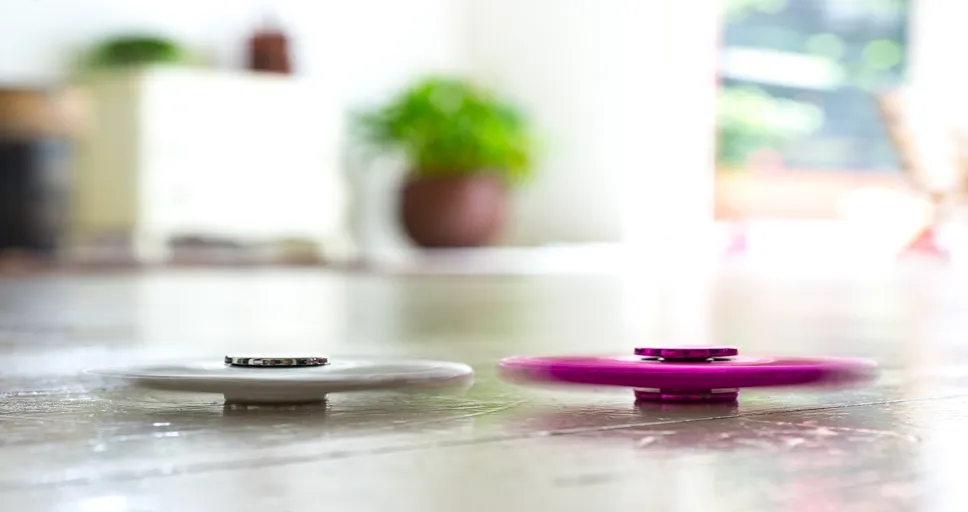Love is weird, right? Now throw in autism love languages, and you’re diving into a beautifully complex puzzle with pieces that sometimes need a little extra finesse to fit together. Love on the autism spectrum often challenges the conventional playbook of romance. It’s not about chocolates or cheesy love notes—though, hey, those can still be nice. It’s about understanding how people on the spectrum uniquely express and receive love.
For some, love might be more practical than poetic—think acts of service like remembering your favorite snack or fixing your Wi-Fi. For others, it’s all about routine, like carving out time for deep, meaningful conversations or sharing a mutual love for obscure documentaries. And sensory sensitivities? They can make physical touch a more nuanced love language—light pressure, certain textures, or even the way you hug can carry huge significance.
The key to all this? Ditching assumptions. People on the spectrum have their own emotional rhythms, and learning to tune in is a process—one that’s worth every awkward misstep and surprising discovery. Because when you do crack the code of someone’s autism love languages, what you’ll find is a connection that’s authentic, grounded, and deeply, beautifully real.
- Prioritize Predictability: Create routines and consistency to build trust and security in the relationship.
- Engage in Meaningful Dialogue: Dive into deep conversations that reflect interest in their passions and inner world.
- Show Love Through Actions: Thoughtful gestures like accommodating sensory needs or helping with tasks express care deeply.
- Respect Sensory Sensitivities: Find non-overwhelming ways to express affection, like gentle touch or shared space.
- Be Patient with Social Cues: Understand their unique communication style and value their heartfelt, direct expressions of love.
Table of Contents
3 Key Autism Love Languages for People with Autism

Understanding autism love languages is like decoding a secret recipe for connection. It’s not one-size-fits-all, but there are three key ways love often shows up for people on the spectrum. Spoiler: it’s heartwarming, a little quirky, and completely worth the effort to learn.
1. Predictability and Routine
For many on the autism spectrum, love thrives in the safe harbor of predictability. Forget grand romantic gestures; consistency is the ultimate declaration of affection. Whether it’s sticking to date night every Tuesday or remembering how they like their coffee, these small routines build trust and create a sense of security. It’s not boring—it’s like having your own secret handshake but in lifestyle form.
2. Deep and Meaningful Conversations
Forget surface-level chit-chat. Many autistic individuals crave conversations that go beyond the weather and what’s for dinner. Topics can range from philosophical musings about the universe to the intricacies of their latest hyperfixation (don’t know what that means? Don’t worry, they’ll explain in detail). Diving into these rich dialogues shows you’re interested in their inner world, which is basically a love letter in conversation form.
3. Thoughtful Acts of Service
Love for many autistic people isn’t necessarily about words or touch—it’s in the doing. This might mean helping out with a task that’s overwhelming or paying attention to their sensory needs. Acts like dimming the lights when they’re overstimulated or bringing them noise-canceling headphones can say “I love you” louder than any romantic sonnet ever could. It’s love in action, and honestly, it’s pretty swoon-worthy.
At the end of the day, understanding these autism love languages is about tuning into what makes your partner feel safe, valued, and genuinely seen. And isn’t that the whole point of love anyway?
3 Challenges in Expressing Love for Those on the Spectrum
Expressing love can be tricky for anyone—like trying to text “I love you” without overthinking how many heart emojis are too many. But for those on the autism spectrum, the challenges are uniquely layered. Understanding autism love languages means recognizing that the way love is communicated might look a little different, but it’s no less profound.
Imagine that holding hands feels like gripping a porcupine. For some autistic people, physical affection can be challenging because of sensory sensitivities. Hugs might be too tight, certain textures unbearable, and even a romantic candlelit dinner could turn into a sensory overload nightmare (so much noise, so many smells). It’s not about rejecting love; it’s about finding sensory-safe ways to express it, like a gentle hand squeeze or simply sitting close without touch.
2. Interpreting and Using Social Cues
Social norms in relationships? They can feel like deciphering hieroglyphics for people on the spectrum. Flirting, subtle hints, or reading between the lines might not come naturally, leading to moments of “Wait, was that a compliment or sarcasm?” Similarly, expressing emotions can be tricky. Love might come out as a blunt “I appreciate you” instead of a poetic declaration, but hey, it’s straight from the heart.
3. Balancing Hyperfocus and Emotional Availability
Autistic individuals often have deep passions (hello, hyperfixations!) that can consume their attention. While this is amazing—who doesn’t love someone who knows everything about 18th-century maritime history?—it can sometimes leave little room for emotional spontaneity. Shifting focus from their special interests to a partner’s needs might require conscious effort, but it doesn’t mean love isn’t there. It’s just a different kind of balancing act.
Ultimately, while these challenges might seem daunting, they’re really opportunities to learn and grow together. With patience, creativity, and a willingness to adapt, understanding autism love languages becomes a shared journey that deepens connection in ways you never imagined.
3 Ways to Support Your Partner’s Love Language

Love is like a foreign language sometimes, and when it comes to autism love languages, the phrasebook might not come preloaded. But here’s the good news: learning how to support your partner’s unique way of expressing and receiving love can turn your relationship into a next-level connection. Here’s how to make it work without feeling like you’re cramming for a test.
1. Understand Their Sensory Preferences
Your partner’s sensory world might be a little (or a lot) different from yours. That means things like loud music, strong cologne, or bright lights might not scream romance—they might just scream. Pay attention to what makes them comfortable. Maybe they love the soothing weight of a blanket during movie night or feel most connected through a soft, non-overwhelming hug. Tailoring your affection to their sensory needs shows not just love, but respect for how they experience the world.
2. Get Curious About Their Interests
For many autistic people, special interests are a core part of who they are. Supporting their love language often means diving into these passions with enthusiasm, even if you don’t quite understand why anyone would want to spend hours categorizing bird species or rewatching Star Wars for the 27th time. By engaging with what lights them up, you’re showing that their joy matters to you. Bonus points if you geek out alongside them—it’s basically a love duet.
3. Communicate Clearly and Directly
Forget subtle hints and vague “What do you want to do tonight?” questions—this is not the time for interpretive dance communication. Many autistic individuals appreciate straightforwardness, so don’t be afraid to spell things out. Ask them what makes them feel loved and tell them how you feel too. Building this open line of communication might not sound like a Nicholas Sparks moment, but trust me, it’s way more effective for nurturing a lasting connection.
Supporting your partner’s autism love languages is less about grand gestures and more about showing up in ways that genuinely matter to them. It’s thoughtful, intentional, and, above all, a testament to the love you’re building together.
- Love on the autism spectrum emphasizes understanding unique expressions like routines, deep conversations, and thoughtful acts of service.
- Sensory sensitivities and challenges with social cues may require creative, patient approaches to expressing and interpreting love.
- Building authentic connections means tuning into what makes a partner feel valued, creating trust, and celebrating their individuality.
Autistic love language
Frequently Asked Questions

How do people with autism show love?
People with autism show love in unique ways, often through actions, quality time, or consistent support rather than overt expressions, depending on their communication and emotional style.
How do I understand a man’s love language if he is autistic?
Understanding an autistic man’s love language involves observing how he expresses care, listening to his preferences, and having open, direct conversations about what makes him feel loved and understood.
What are some examples of how an autistic person might express affection in a relationship?
An autistic person might express affection by sharing their special interests, offering help with tasks, remembering details about their partner, or spending time together in a comfortable, familiar way.
Bridging the Gap in Communication
Communication in relationships is hard enough when you’re deciding whether “I’m fine” means “I’m actually fine” or “I’m about to launch into a 20-minute monologue about why I’m not fine.” Add autism love languages into the mix, and the gap can feel more like a canyon. But here’s the thing: bridging it isn’t about perfect conversations—it’s about learning to speak with each other, not at each other.
Start with Understanding
First off, ditch assumptions. Autistic communication styles can be wonderfully direct, which is refreshing, but might feel blunt if you’re used to a more roundabout approach. Instead of reading between the lines, focus on what’s being said. If your partner tells you they’re overwhelmed, don’t guess—just ask, “How can I help?” It’s not about mind-reading; it’s about clarity.
Adjust Your Listening Skills
Listening isn’t just hearing—it’s understanding where your partner is coming from. Maybe they don’t use flowery words or grand declarations of love, but their consistent actions—like texting to check if you ate lunch—speak volumes. Tune into their unique way of showing care and validate it, even if it’s different from what you’re used to.
Meet in the Middle
Bridging the communication gap doesn’t mean one person does all the work. It’s about both partners finding ways to meet halfway. If your partner processes emotions differently, give them time to articulate what they’re feeling. On the flip side, share your own needs clearly, so they’re not left guessing. It’s like a dance—awkward at first, but smoother with practice.
When it comes to autism love languages, the magic lies in creating a shared dialogue that respects both of your needs. It’s not about perfection; it’s about progress—and maybe a little patience (and humor) along the way.



